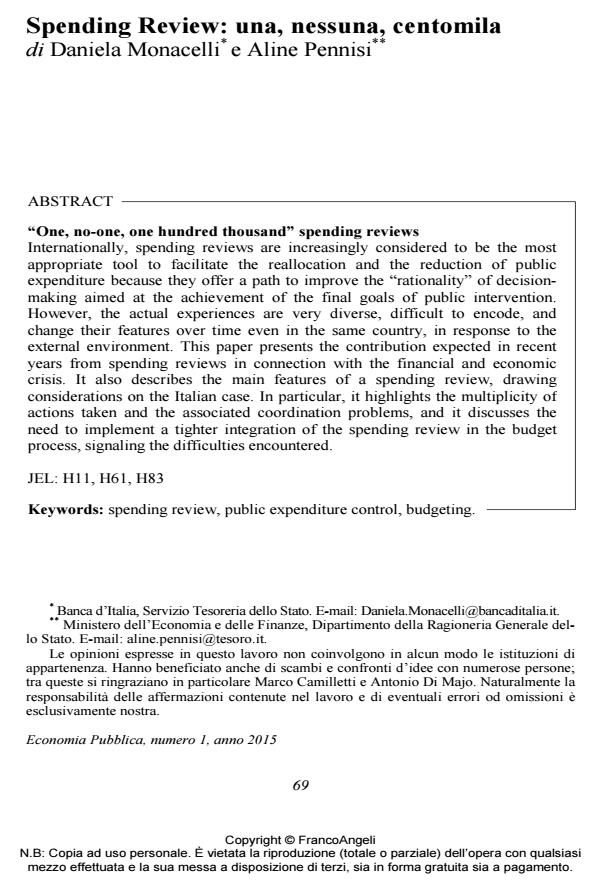"One, no-one, one hundred thousand" spending reviews
Journal title ECONOMIA PUBBLICA
Author/s Daniela Monacelli, Aline Pennisi
Publishing Year 2015 Issue 2015/1
Language Italian Pages 40 P. 69-108 File size 605 KB
DOI 10.3280/EP2015-001004
DOI is like a bar code for intellectual property: to have more infomation
click here
Below, you can see the article first page
If you want to buy this article in PDF format, you can do it, following the instructions to buy download credits

FrancoAngeli is member of Publishers International Linking Association, Inc (PILA), a not-for-profit association which run the CrossRef service enabling links to and from online scholarly content.
Internationally, spending reviews are increasingly considered to be the most appropriate tool to facilitate the reallocation and the reduction of public expenditure because they offer a path to improve the "rationality" of decisionmaking aimed at the achievement of the final goals of public intervention. However, the actual experiences are very diverse, difficult to encode, and change their features over time even in the same country, in response to the external environment. This paper presents the contribution expected in recent years from spending reviews in connection with the financial and economic crisis. It also describes the main features of a spending review, drawing considerations on the Italian case. In particular, it highlights the multiplicity of actions taken and the associated coordination problems, and it discusses the need to implement a tighter integration of the spending review in the budget process, signaling the difficulties encountered.
Keywords: Spending review, public expenditure control, budgeting
Jel codes: H11, H61, H83
- LLE-Government in Italia: Situazione Attuale, Problemi E Prospettive (E-Government in Italy: Current Issues and Future Perspectives) Carlo Maria Arpaia, Pasquale Ferro, Walter Giuzio, in SSRN Electronic Journal /2016
DOI: 10.2139/ssrn.2759876
Daniela Monacelli, Aline Pennisi, Spending Review: una, nessuna, centomila in "ECONOMIA PUBBLICA " 1/2015, pp 69-108, DOI: 10.3280/EP2015-001004